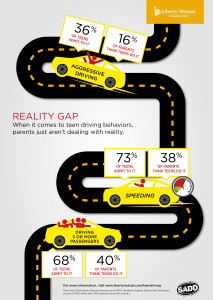Attention young drivers! What would you do with $200.00? Paying it as a fine is probably not on the top of your list, but that could be your reality if you text and drive. According to MO Department of Transportation, “You text, you’re next.” Since 50% of teens admit to texting while driving, you truly could be next.
Distracted driving includes texting, eating, talking, changing the radio station, or any other interruption that takes your eyes off the road. It only takes a split second to change a life forever, and over 80% of crashes involve distractions. Take a few seconds to educate yourself and peers to avoid common, and possibly fatal, distractions.
Commit to distraction free driving today, and don’t let an emoji wreck your life!
10 tips to avoid distractions while driving:
- Fully focus on driving. Do not let anything divert your attention, actively scan the road, use your mirrors, and watch out for pedestrians and cyclists.
- Store loose gear, possessions and other distractions that could roll around in the car, so you do not feel tempted to reach for them on the floor or the seat.
- Make adjustments before you begin your trip. Address vehicle systems like your GPS, seats, mirrors, climate controls and sound systems before hitting the road. Decide on your route and check traffic conditions ahead of time.
- Finish dressing and personal grooming at home, before you get on the road.
- Snack smart. If possible, eat meals or snacks before or after your trip, not while driving. On the road,avoid messy foods that can be difficult to manage.
- Secure children and pets before getting underway. If they need your attention, pull off the road safely to care for them. Reaching into the backseat can cause you to lose control of the vehicle.
- Put aside your electronic distractions. Don’t use cell phones while driving, handheld or hands-free, except in absolute emergencies. Never use text messaging, email functions, video games or the internet with a wireless device, including those built into the vehicle, while driving.
- If you have passengers, enlist their help so you can focus safely on driving.
- If another activity demands your attention, instead of trying to attempt it while driving, pull off the road and stop your vehicle in a safe place. To avoid temptation, power down or stow devices before heading out. Drivers should use caution while using voice-activated systems, even at seemingly safe moments when there is a lull in traffic or the car is stopped at an intersection, because potentially dangerous distractions can last longer than most drivers expect.
- As a general rule, if you cannot devote your full attention to driving because of some other activity,it’s a distraction. Take care of it before or after your trip, not while behind the wheel.
ACT Missouri would like to extend our gratitude to the National Highway Traffic Administration for this information.


